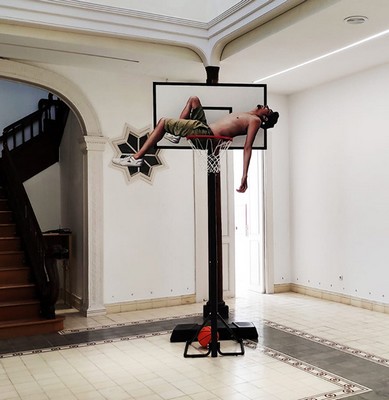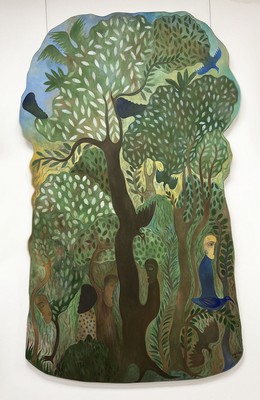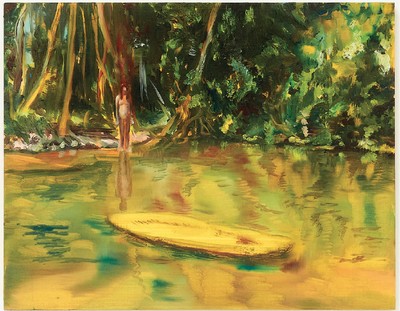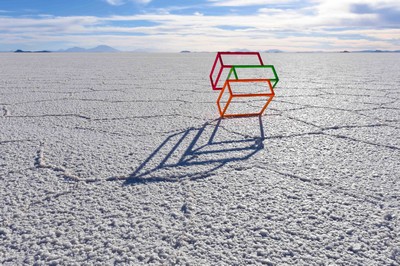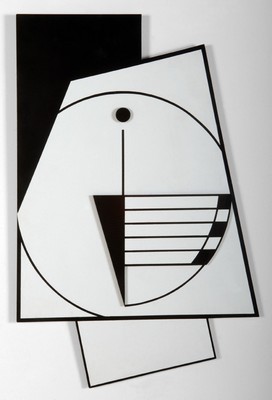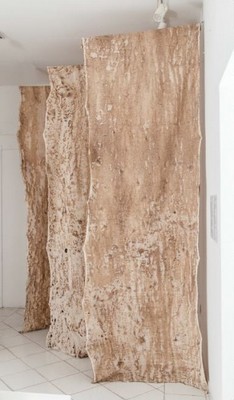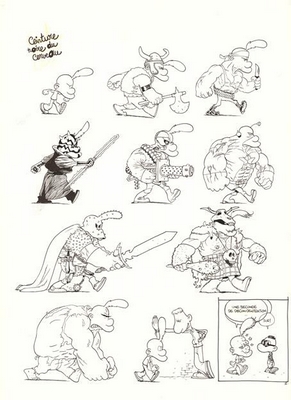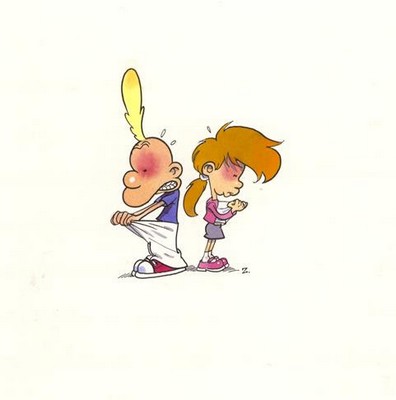Pinta Miami 2022
The Modern & Contemporary
Latin American Art Show
The Hangar in Coconut Grove, Miami
November 30 - December 4, 2022
Pinta Miami celebrates its sixteenth anniversary venturing into a brand new concept: this year the most important Latin American contemporary art fair presents a blend format that combines top-notch technology with the glamour of meeting in person. A team of ten internationally recognized curators develops innovative proposals for the different sections of the fair. A series of prestigious prizes will award and support important artists at different stages of their career. Tradition and innovation coexist in this edition, through a tribute to the great Ides Kihlen, and the novelty of the first ever exhibition in the Metaverse. These are just some of the forefront proposals that Pinta Miami presents this year, opening its new headquarters at The Hangar in Coconut Grove.
In line with Pinta's commitment as an international platform to stimulate and disseminate Ibero-American modern and contemporary art, this year's edition presents an artistic program that includes diverse and interdisciplinary exhibitions, and sections carefully articulated by the curators Omar-Pascual Castillo, Mario Gioia and José Antonio Navarrete for the Main Section; Oscar Roldán-Alzate in the Solo-Duo Projects and Main Section sections; Felix Suazo for Special Projects; Florencia Portocarrero in NEXT; Gean Moreno for Intersections; Pascal Tarabay for the Pinta Design section; Veronica Santalla for the Media Point section and curator architect Daniel Fischer for the design and spatial distribution of the fair.
Pinta Miami seeks to support artistic practice and encourage collecting, through new and established awards. In its twelfth edition, the EFG Latin America Art Award, sponsored by our main supporter, encourages the production of emerging Latin American artists, pre-selected through a jury at contemporary art fairs in Latin America throughout the year. On the other hand, the NEXT Prize will be awarded for the first time, for the stand that achieves the most cohesive and comprehensive dialogue of the practices of the artists represented. As a crowning note, Pinta Miami will present a series of seven Private and Public Collections Awards, from important and prestigious Ibero-American collectors, from both sides of the Atlantic.
In this new edition there is also a place for tributes. With the Aina Nowack Gallery, Pinta Miami celebrate Ides Kihlen, who turned 105 in 2022, with a tribute exhibition at the National Museum of Fine Arts in Buenos Aires and with the Lifetime Achievement Award from the National Academy of Fine Arts.
Finally, in a completely disruptive and innovative approach, and seeking to create a link between the physical and virtual worlds, Pinta is the first major art fair to present an exhibition in the Metaverse, together with edigital.art, the Ella Fontanals Cisneros collection and the Museum District of Decentraland.
Pinta Concept thus becomes an exceptional showcase that not only highlights the outstanding quality of Latin American art, but also combines exclusivity and prestige to enhance the voice of artists and their social, cultural and ecological concerns. Fusing the face-to-face with the virtual, and connecting art lovers with its creators, Pinta is more than a fair: it is a concept.
Curated by Omar-Pascual Castillo, Mario Gioia and José Antonio Navarrete, the main section of Pinta Miami presents an international selection of galleries where various contemporary axes converge and share a gene rooted in Ibero-American culture.
Sin Título (T093), 2000
Edición única. Acrílico sobre cartón, 30 x 34.9 cm
Presented by Aina Nowack / AAC Galeria de Arte, Madrid, Spain
Arde, 2022.
Fotografía digital. 30 x 30 cm. Ed 5 PA 2
Presented by +GALLERyLABs, New Haven, CT, USA
+GALLERyLABs also exhibits Emilia Cunliffe, Mono Giraud, José Gurvich, Adolf Albers, Miguel Trelles, Indira Urrutia, Norberto Estrin, at Pinta Miami 2022.
Presented by Artizar, La Laguna, Tenerife, Spain
Dad, 2016
Ed.10. Fotografía, 61 x 80 cm
Presented by Artizar, La Laguna, Tenerife, Spain
Artizar also exhibits Roberto Diago, Carlos Nicanor, Raul Cordero, Marco Alom, at Pinta Miami 2022.
#121-TI
The Seven Vanishing Points, 1979
Photo-collage with photomaton and illustration from
Hans Vredeman de Vries. Perspective, 1604-1605, 17 x 14 in.
Presented by Artmedia Gallery, Miami, FL, USA
Artmedia Gallery also exhibits Claudia Ammirata, Rainy Silvestre, Alberto Sisso, Magüi Trujillo, at Pinta Miami 2022.
Diente de León. 2022
Tejido de cáñamo con urdimbre de algodón y estructura de bronce, 140 x 78 cm
Presented by Espacio Liquido + La Gran, Gijon, Asturias, Spain
Espacio Liquido also exhibits Mercedes Elizalde, Samuel Sowatey, at Pinta Miami 2022.
Nanny and children, 2019
Grafito y acuarela sobre lienzo, 127 x 98 cm
Presented by Galeria El Museo, Bogota, Colombia
Galeria El Museo also exhibits Adriana Duque at Pinta Miami 2022.
Barricada 9alt BP L200, Unique, 2019
Bronze. 200 x 140 x 90 cm / 78.74 X 55.11 X 35.4 in
Presented by GBG Arts, Miami, USA / Caracas, Venezuela
GBG Arts also exhibits Carlos Cruz-Diez, Jesús Rafael Soto, Carlos Medina, Gianna Pollarolo, Michelle Prazak, Ricardo Benaim, at Pinta Miami 2022.
Sin fondo II, 2022
Papel fotográfico pintado con tintas alquitranadas,
laqueado, maruflado sobre tela y rasgado. 1,96 x 1,00 m
Presented by Imaginario, Buenos Aires, Argentina
Imaginario also exhibits Ana Zorraquin, Ángeles Pereda, Maitemazz, Charo Zapater, Arbissone, Alexandra Fuchs, Gerardo Feldtein, Lelo Freixas, Luz Iriarte at Pinta Miami 2022.
Sin titulo, Blanket series, 2022
Ceramic, cement, epoxy putty and iron
Presented by Janaina Torres Galeria, Sao Paulo, Brazil
It is in the depths that I dwell and make myself home, 2022
Acrylic, oil pastel chalk, oil stick and markers on canvas, 138 x 100 cm
Presented by Janaina Torres Galeria, Sao Paulo, Brazil
Janaina Torres Galeria also exhibits Antonio Oloxedê, Liene Bosquê, Marina Caverzan, Paula Juchem, Ricardo Siri, Sandra Mazzini, at Pinta Miami 2022.
Quest for Water, 2022
Graphite on paper, 48 x 46 in.
Presented by Julia Baitalá - Arte Contemporáneo, Buenos Aires, Argentina
Julia Baitalá - Arte Contemporáneo also exhibits Estela Mydlarski, Marcelo Toledo, Sarana Juarez Estrada, Irina Rosenfeldt, Ximena Giraudi, Sergio Castiglione, Iliana Rigueiro, at Pinta Miami 2022.
The End, 2021
Lacquered book. 20,5 x 13 x 6 cm
Presented by Llamazares Galería, Gijon, Asturias, Spain
Llamazares Galeria also exhibits María Jesús Rodríguez and Maite Centol at Pinta Miami 2022.
Launce Site Coot Bay Pond, 2021
Presented by LnS Gallery, Miami, FL, USA
Standard Model, 2022
Oil on canvas, 60 x 144 inches
Presented by LnS Gallery, Miami, FL, USA
LnS Gallery also exhibits Gustavo Acosta, Carlos Alfonzo, T. Eliott Mansa, William Osorio, Tony Vazquez-Figueroa, at Pinta Miami 2022.
Amada la mar, 2019
Acrílico y óleo sobre lienzo y madera. 165 x 200 cm
Presented by OdA art gallery, Buenos Aires, Argentina
OdA art gallery also exhibits Andrea Alkalay, Fabiana Barreda, José Marchi, Josefina Robirosa, Mónica Fierro, at Pinta Miami 2022.
Fragmento de un paisaje 1, 2017
Mix media, acrylic on canvas, 90.5 x 55.9 in.
Presented by Onate Contemporary Art, Miami FL, USA
Onate Contemporary Art also exhibits Antonio Segui, Javier Ampudia, Jorge Varona, Osley Gil, at Pinta Miami 2022.
On the Road, 2010
Acrylic, charcoal, enamel on canvas
76h x 116w in / 193.04h x 294.64w cm
Presented by Lyle O. Reitzel Gallery, Santo Dominguo
Lyle O. Reitzel Gallery also exhibits Edouard Duval Carrié, José García Cordero, Ignacio Iturria, at Pinta Miami 2022.
Tortuga / Turtle, 2019
Bordado sobre lino / Embroidery on linen, 150 x 167 cm
Presented by MAP - Montenegro Art Projects, Bogota, Columbia
MAP - Montenegro Art Projects also exhibits Liliana Angulo, Laura Maier, Nicole Mazza, Aimée García, Alejandro Tobón, José Ángel Vincench, at Pinta Miami 2022.
Mounstruo, 2022
Acrílico sobre tela, 200 x 150 cm
Presented by Pabellón 4 Arte Contemporáneo, Buenos Aires, Argentina
Pabellón 4 Arte Contemporáneo also exhibits Perla Benveniste, Dino Bruzzone, Jimena Fuertes, Andrea Tregear, Ale Jordao, at Pinta Miami 2022.
Drifting Apart. Where Landscapes Fuse, Where Landslides Peruse, 2021
Oil on panel
Presented by Plataforma ArtBase, Montréal, QC
Plataforma ArtBase also exhibits Juan Fontanive, Dulce Pinzón, Diego Moreno, Emilio Rangel, Jun Olman, at Pinta Miami 2022.
Untitled, 1970-1974
Plexiglas, 20 h x 19.75 w x 5.75 d in. / 51 x 50 x 15 cm
Presented by Prima Galeria, Santiago, Chile
Prima Galeria also exhibits Mario Morales, Victor Vasarely, Rogelio Polesello, Alberto Biasi, Julio Le Parc, Jesús Soto, Francisco Sobrino, Roberto Matta, at Pinta Miami 2022.
Untitled, 2017
Inkjet print on cotton paper, 63 x 43
Presented by Salar Galeria de Arte, La Paz, Bolivia
Rythme 3, 1995
Acrylic on plastic panel. 93 h x 62 w cm / 36.61 h x 24.41 w in.
Presented by Sammer Gallery, Miami, FL, USA
Sammer Gallery also exhibits Pablo Atchugarry, Jose Pedro Costigliolo, Maria Freire, Mariano Carrera, Sebastian Barrandeguy, Carlos Carnero, Romulo Aguerre, at Pinta Miami 2022
Serie Conmemoración. Génesis americana
Pochoir, 50 x 65 cm, 1 en 15, 1991
Presented by SASHA D espacio de arte, Cordoba, Argentina
Heptagono de luz, 2022
Madera e iluminacion, 30 x 30 cm
Presented by SASHA D espacio de arte, Cordoba, Argentina
SASHA D espacio de arte also exhibits Eduardo Moisset de Espanes, Lorena Faccio, Matias Amici, at Pinta Miami 2022.
Caja Bronce, 2022
Bronce a la cera perdida. Medidas Variables
Presented by ViedmaArte, Asuncion, Paraguay
ViedmaArte also exhibits Veronica Viedma at Pinta Miami 2022.
Serie: ao/ proyecto herbolario, 2023.
Impresión de corteza de árboles nativos con tierra,
minerales y pigmentos vegetales sobre tela de fibra natural.
Instalacion. Soporte: tela de ao poi (fibra natural) 1.00m x 3.00m
Presented by Artística - espacio de arte, Asuncion, Paraguay
Artística - espacio de arte also exhibits Osvaldo Pitoe and Julia Isidrez at Pinta Miami 2022.
Other exhibiting galleries in the main section of Pinta Miami 2022: Alex Slato (Miami) and Jackie Shor Project (Sao Paulo).
Pinta Miami 2022 | New Location
The Hangar in Coconut Grove
3385 Pan American Drive,
Coconut Grove, Miami FL 33133








